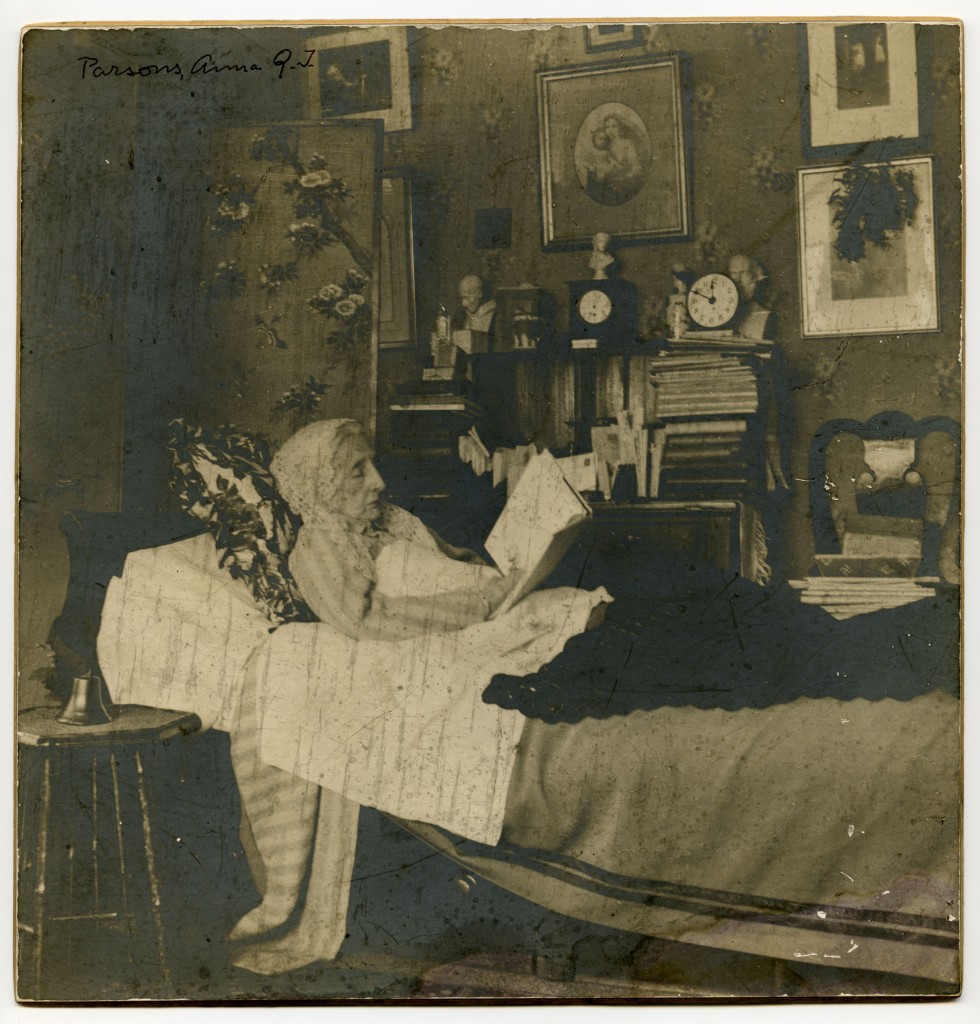
Chances are if you are looking at this, you like to read. If you are the least bit curious about reading habits in America and how they have been presented in books and images over the past three centuries, I encourage you to visit a new exhibition at Smith College in Northampton, Massachusetts. Last week the American Antiquarian Society’s Center for Historic American Visual Culture (CHAViC), in collaboration with the Mortimer Rare Book Room at Smith, hosted the opening of A Place of Reading: Three Centuries of Reading in America. Located in the Book Arts Gallery on the third floor of Neilson Library at Smith, the exhibition is open to the public and will be on view through May 28, 2013. Most of the materials in the exhibition are on loan from AAS.

Included in the exhibition are representations of the places and events that prompted reading among Americans of all ages. The exhibition is organized into the following sections: The Colonial Home; Revolutionary Taverns; North/South/East/West: Newspapers, Periodicals, and the Popular Press; and Reading at the Front: The Civil War. An additional section, “Caught in the Act,” highlights other places of reading such as the kitchen, bedroom, bath, prisons, and public spaces.
The exhibition was curated by Cheryl Harned, a University of Massachusetts graduate student who completed an internship at AAS several years ago. Under the direction of former director of CHAViC Gigi Barnhill, Cheryl researched the history of reading and developed an online exhibition for the AAS website as her final project. More recently, Cheryl developed the online version into a physical exhibition so that visitors can see the actual prints and books. Some of the materials now on view are not in the online exhibition, and the new exhibition also includes objects on loan from the Joseph Allen Skinner Museum of Mount Holyoke College.
 As the new director of CHAViC, I find this exhibition particularly exciting because as an instructor in American Studies and Art History at Smith, I can use it as a teaching tool. This week I took my students to see the numerous discussion-provoking examples of people reading and what they could help us to understand about gender and national identity. They especially loved seeing the photograph of the elderly matron reading in bed (see left) and the mid-nineteenth-century mother reading a novel in the kitchen while chaos ensues all around her! Go see for yourself–it’s worth a visit. Take a complimentary bookmark home with you, and don’t forget to write a note in the guest book about your favorite place to read!
As the new director of CHAViC, I find this exhibition particularly exciting because as an instructor in American Studies and Art History at Smith, I can use it as a teaching tool. This week I took my students to see the numerous discussion-provoking examples of people reading and what they could help us to understand about gender and national identity. They especially loved seeing the photograph of the elderly matron reading in bed (see left) and the mid-nineteenth-century mother reading a novel in the kitchen while chaos ensues all around her! Go see for yourself–it’s worth a visit. Take a complimentary bookmark home with you, and don’t forget to write a note in the guest book about your favorite place to read!
For more information on the exhibition visit: http://www.smith.edu/libraries/info/news/placeofreading
